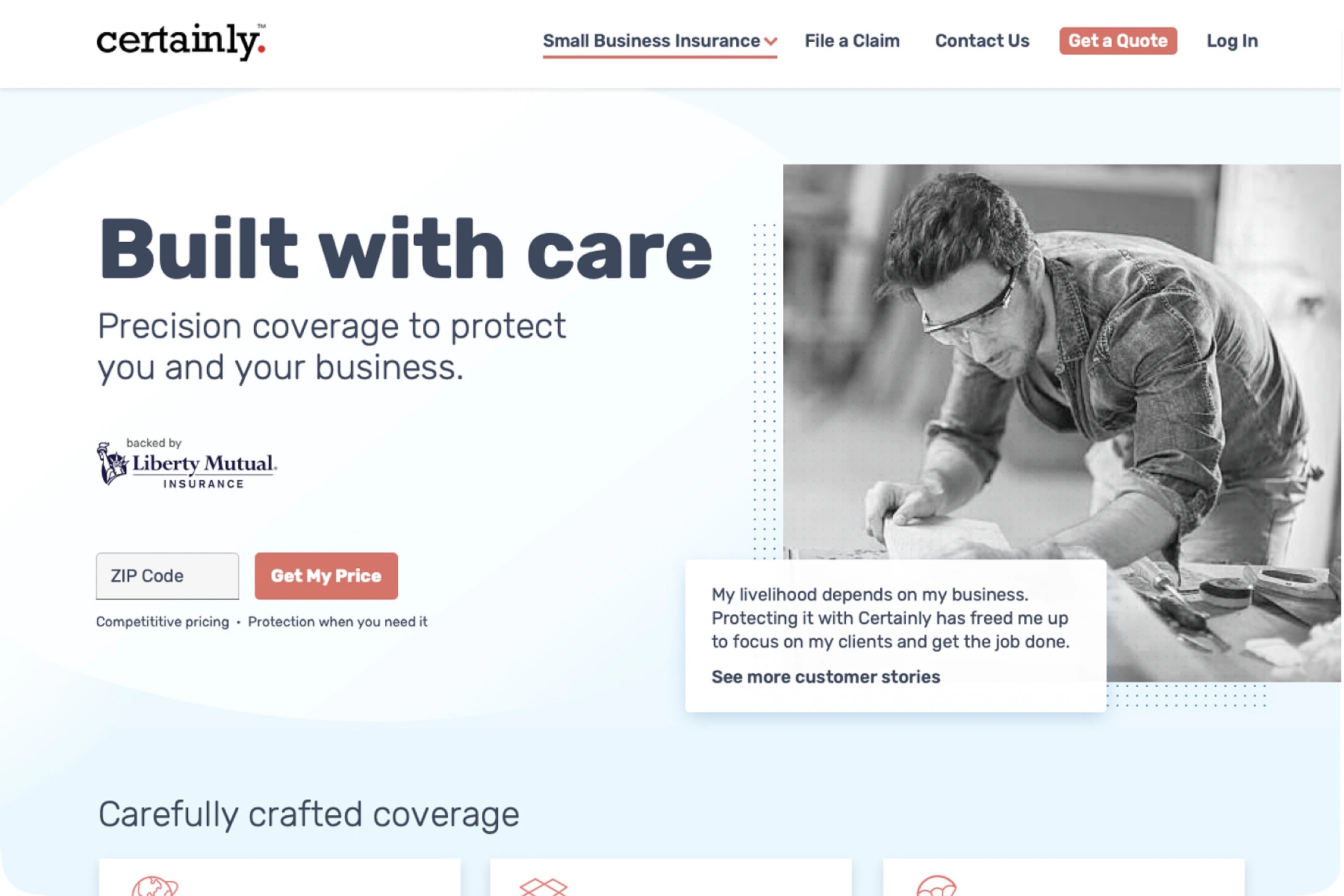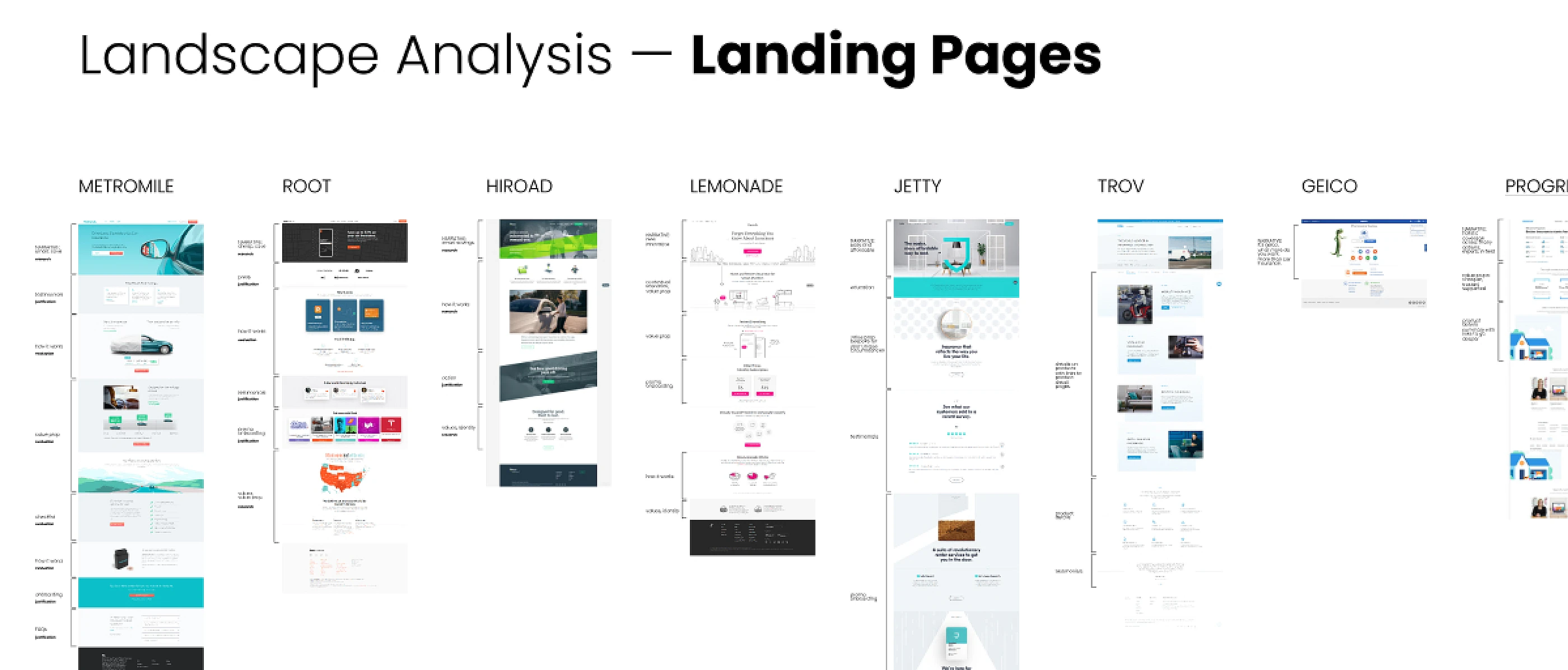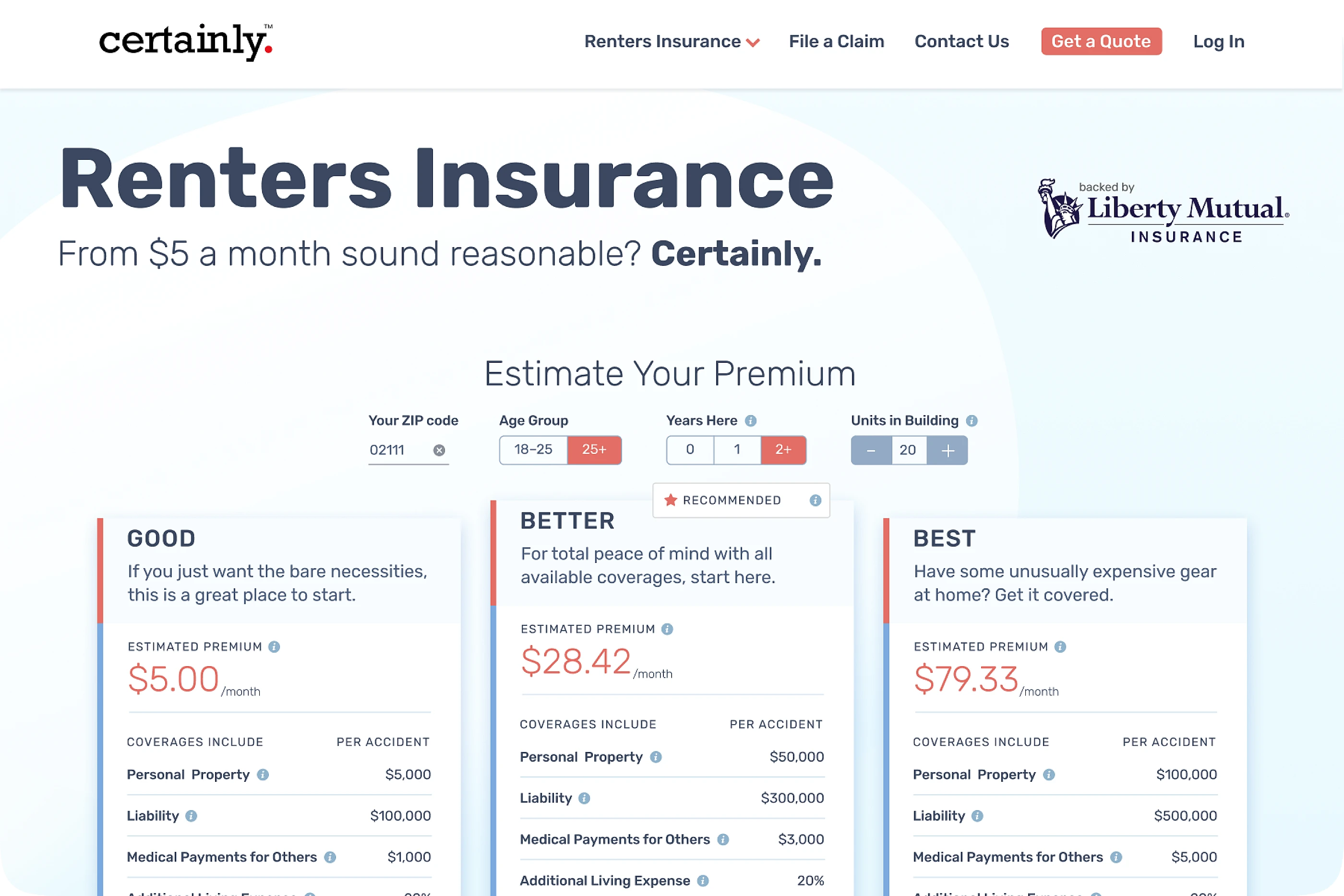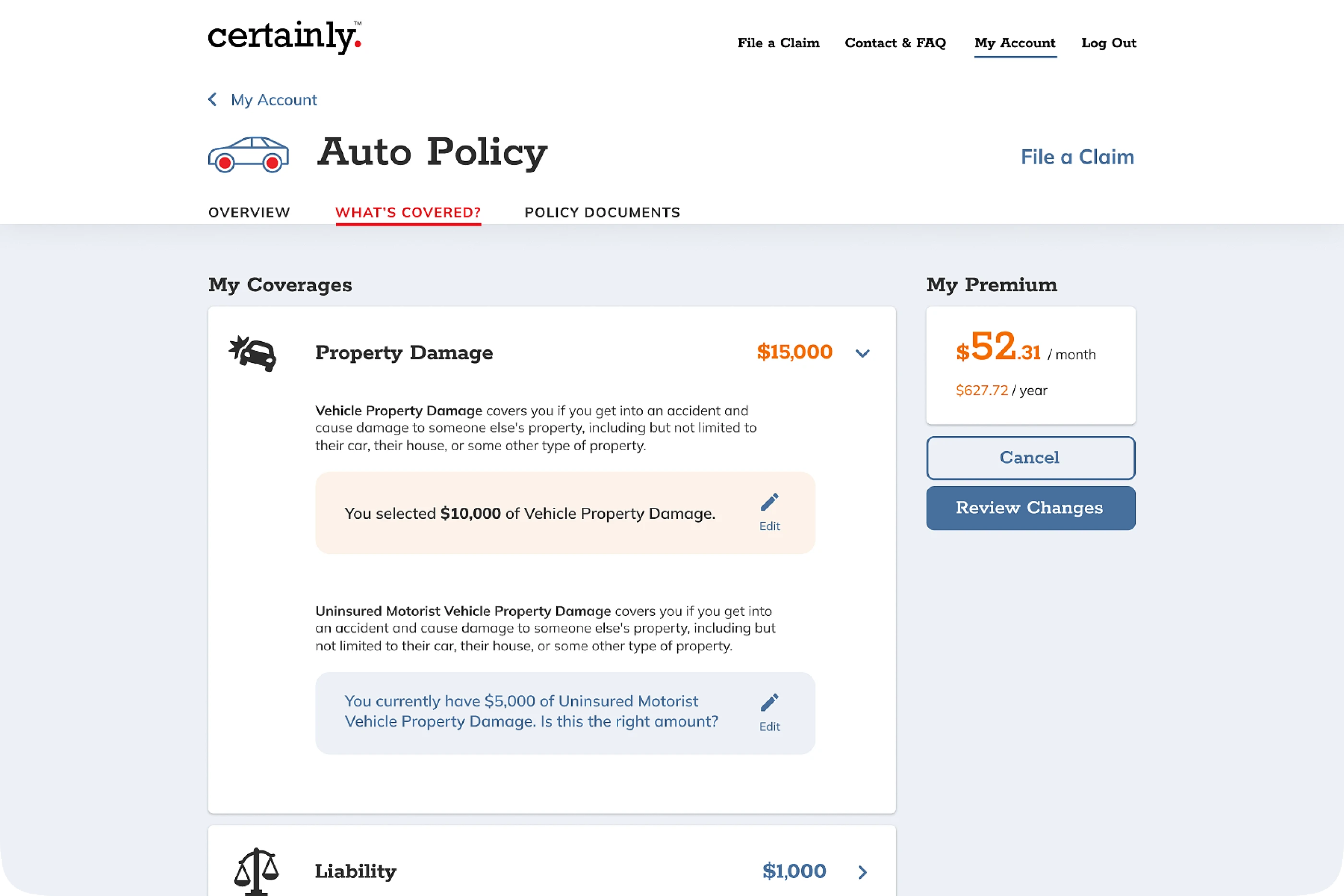Liberty Mutual
For Liberty Mutual, I led a team of designers to define and design a brand new insurance product aimed at millennials.

Certainly was a startup within Liberty Mutual's innovation labs. I led a zero-to-launch conception and design of this net-new insurance offering, aimed at millennials, a typically under-insured group.

Using a Lean UX process, we rapidly dialed in a validated strategy which was effective differentiating Certainly in a crowded and commoditized market.

Example of a landscape analysis, allowing us to evaluate what worked and where there was room for improvement.

Through rapid iteration and user evaluation, we discovered the power of a 'pre-quote calculator', allowing prospective customers to get a quick sense of possible costs and options.
This was unique in an industry that typically promises 'a quote in as little as 5 minutes'; millennials were wary of givinng away personal information in a quote process, (rightly) fearful of being spammed and pursued by these companies.
By offering an annonymous, zero-risk interaction to start the relationship, we were able to build trust and position this new brand as a helpful tool, which resonated far better with our target audience than 'old-school' quote flows used by all our competitors.
Various UX/UI best-practices are also on display here: good/better/best tiers to reduce choice paralysis; contextual tooltips to unfold educational content in a 'call and response' pattern; and, from a content-strategy perspective, a focus on the customer's needs rather than the supposed merits of the product.

A simple 'object-oriented' UI makes use of React's ability to create a more app-like experience on the web; instead of page reloads or long wizard flows, state changes are handeled via progressively-revealed UI, making interaction very intuitive.
While this may seem table-stakes 'good design', it contrasts with much of the rest of the industry, which remains mired in older tech stacks and UX approaches to such transactional interfaces.